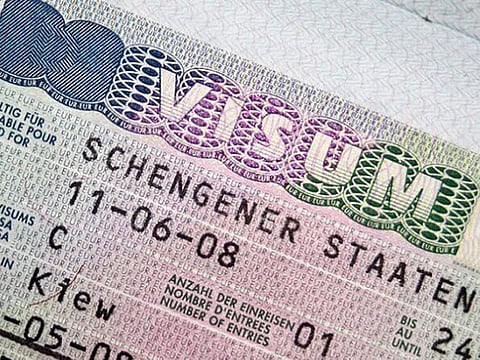Schengen visa: How UAE residents can unlock more destinations in Europe and worldwide
Here is how you can maximise your European visa to explore several non-Schengen countries

Dubai: Unknown to many UAE residents, Europe’s Schengen visa - a golden ticket to short-term stays in 29 Schengen member states – can also be used to enter several non-Schengen countries.
“Some applicants of the Schengen get a multiple entry visa validity of 6 months to a year for a week or two of travel. In this case, we advise our customers to take advantage of the visa and travel to countries that accept the Schengen as a valid entry permit (visa),” said Rashid Abbas, managing director of Arooha Travels.
“To leverage your Schengen visa for travel to non-Schengen countries, you will almost always require a multiple-entry Schengen visa, and in some cases, you may need to have already used your visa to enter a Schengen state at least once,” he added.
Travel agents have also said that verifying the latest requirements with the embassy or consulate of your intended non-Schengen destination is a good idea before planning your trip, as policies are subject to change.
Here are some of the popular non-Schengen countries where a valid multiple-entry Schengen visa can grant you entry or facilitate your visa process:
Europe
Non-Schengen EU and Balkan countries
Cyprus: As an EU member not yet fully integrated into the Schengen Area, Cyprus often allows entry to holders of a valid double or multiple-entry Schengen visa for stays up to 90 days within any 180 days.
Albania: This Southeastern European gem, known for its stunning coastline and rich history, allows entry to valid multiple-entry Schengen visa holders, provided the visa has been used previously to enter a Schengen country. The length of stay is typically limited to the validity of your Schengen visa.
Bosnia and Herzegovina: Travellers with a valid multiple-entry Schengen visa can enter and stay for up to 90 days within 180 days, as long as it's within the validity of their Schengen visa.
Montenegro: You can enter Montenegro and stay for up to 30 days with a valid Schengen visa (or until your visa expires if shorter than 30 days).
Serbia: Holders of a valid multiple-entry Schengen visa can often enjoy visa-free entry to Serbia for stays of up to 90 days.
North Macedonia: A multiple-entry Schengen visa, valid for at least five days after your intended departure from North Macedonia, can grant you entry for up to 15 days per entry, with a total stay not exceeding 90 days in 180 days.
Kosovo: A valid multiple-entry Schengen visa can allow entry to Kosovo for 15 days.
Andorra, Monaco, San Marino, Vatican City: These microstates are not official Schengen members but are effectively within the Schengen Area due to open borders with neighbouring Schengen countries (France for Andorra and Monaco, Italy for San Marino and Vatican City). Therefore, if you can enter the surrounding Schengen country, you can visit these microstates without additional visa requirements.
Global destinations
Beyond Europe, some countries globally may offer visa exemptions or facilitated visa processes for those holding a valid Schengen visa:
Mexico: For tourism, business, or transit, many nationalities holding a valid multiple-entry Schengen visa (and having already used it to enter a Schengen state) can enter Mexico for up to 180 days.
Colombia: Citizens of certain countries holding a valid multiple-entry Schengen visa may be exempt from applying for a Colombian visa. The Schengen visa must usually be valid for at least another six months at entry.
Sao Tome and Principe: A multiple-entry Schengen visa can exempt travellers from needing a separate visa for tourism.
Turkey (Türkiye): For citizens of specific countries (e.g., India, Egypt, Pakistan, Philippines, etc.), a valid Schengen visa may allow them to obtain an electronic visa (e-visa) for Turkey, often for a single entry and a one-month stay. This is a facilitated process rather than direct visa-free entry.
Antigua and Barbuda: A valid Schengen visa can make you eligible for a visa on arrival.
Dominican Republic: If you possess a valid multiple-entry Schengen visa and are travelling for tourism, you may be able to obtain a tourist card upon arrival
However, there are a few considerations UAE travellers must keep in mind:
A single-entry Schengen visa becomes invalid once you leave the Schengen Area. A multiple-entry Schengen visa is essential to visit non-Schengen countries and re-enter the Schengen Area.
Some non-Schengen countries require you to have already used your Schengen visa to enter a Schengen member state before you can use it for entry into their country.
Ensure your Schengen visa's validity covers your entire intended stay in the non-Schengen country.
Always check the specific entry requirements of the non-Schengen country, including proof of sufficient funds, onward/return tickets, and accommodation bookings, as immigration officials often request these.
Visa exemptions and facilitated processes based on a Schengen visa can often be specific to certain nationalities. Always confirm the requirements for your specific passport.
Sign up for the Daily Briefing
Get the latest news and updates straight to your inbox







